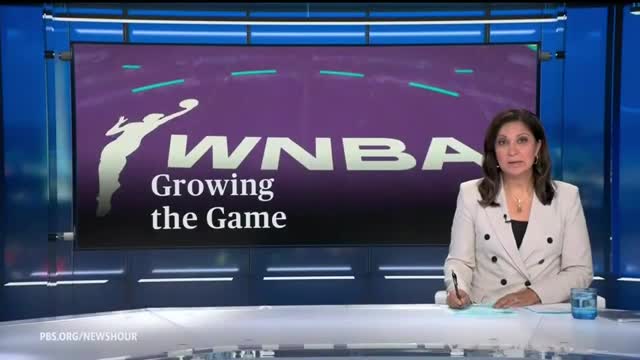WNBA poised for explosive growth with new TV deal

This article was created by AI summarizing key points discussed. AI makes mistakes, so for full details and context, please refer to the video of the full meeting. Please report any errors so we can fix them. Report an error »

The WNBA is experiencing unprecedented growth this season, marked by record attendance and a staggering 183% increase in viewership compared to last year. As the league pauses for the All-Star Game and Olympic competitions, discussions are heating up around a significant new television deal that could reshape its future.
Sabrina Merchant, a women's basketball writer for The Athletic, attributes this surge in popularity to the impact of standout rookies Caitlin Clark and Angel Reese. Their fierce rivalry during the 2023 NCAA championship and subsequent games has drawn fans from college basketball into the WNBA, creating a momentum that has not been seen in years. Merchant likens this moment to the NBA's rise in the 1980s with the emergence of stars like Magic Johnson and Larry Bird, suggesting that the WNBA is at a similar inflection point.
The new television deal, projected to bring in approximately $200 million in its first year—potentially up to six times the current revenue—will significantly influence the league's financial landscape. This influx of funds is expected to enhance player salaries and improve overall player experience, including travel accommodations and parental benefits. Currently, the maximum salary for a WNBA player is around $250,000, while the lowest salary in the NBA is $500,000. The new revenue stream could pave the way for higher salaries and a more equitable revenue split for players.
Merchant emphasizes that maintaining this growth trajectory will require strategic broadcasting decisions, ensuring that WNBA games are easily accessible to fans. As the league continues to capitalize on the excitement generated by its rising stars, the combination of increased visibility and quality of play could sustain its upward momentum. With the right moves, the WNBA may well be on the brink of a new era, one that mirrors the explosive growth seen in professional basketball decades ago.
Sabrina Merchant, a women's basketball writer for The Athletic, attributes this surge in popularity to the impact of standout rookies Caitlin Clark and Angel Reese. Their fierce rivalry during the 2023 NCAA championship and subsequent games has drawn fans from college basketball into the WNBA, creating a momentum that has not been seen in years. Merchant likens this moment to the NBA's rise in the 1980s with the emergence of stars like Magic Johnson and Larry Bird, suggesting that the WNBA is at a similar inflection point.
The new television deal, projected to bring in approximately $200 million in its first year—potentially up to six times the current revenue—will significantly influence the league's financial landscape. This influx of funds is expected to enhance player salaries and improve overall player experience, including travel accommodations and parental benefits. Currently, the maximum salary for a WNBA player is around $250,000, while the lowest salary in the NBA is $500,000. The new revenue stream could pave the way for higher salaries and a more equitable revenue split for players.
Merchant emphasizes that maintaining this growth trajectory will require strategic broadcasting decisions, ensuring that WNBA games are easily accessible to fans. As the league continues to capitalize on the excitement generated by its rising stars, the combination of increased visibility and quality of play could sustain its upward momentum. With the right moves, the WNBA may well be on the brink of a new era, one that mirrors the explosive growth seen in professional basketball decades ago.
View full meeting
This article is based on a recent meeting—watch the full video and explore the complete transcript for deeper insights into the discussion.
View full meeting